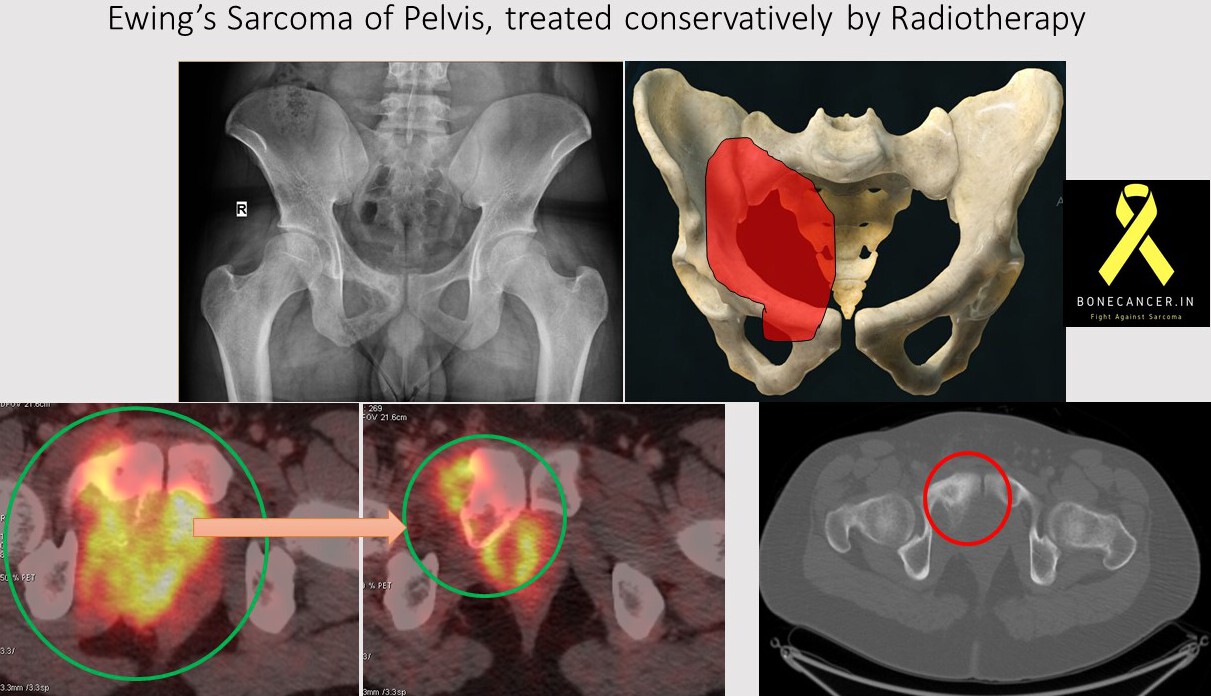RADIOTHERAPY
In Sarcomas & Bone Metastases
What is Radiotherapy ?
- In Radiation therapy, ionizing radiation beams are given in a controlled method to the tumor zone in order to destroy the cancer cells.
In which diseases is radiotherapy advised ?
- Bone sarcoma:
- Post operatively
- Ewing sarcoma (of spine/pelvis/extremity) involving bone where surgery is not feasible, may be treated with only chemotherapy and radiation therapy instead of surgery.
- Osteosarcoma and Chondrosarcoma (except mesenchymal variant) are resistant to radiotherapy insitu.
- Soft tissue sarcoma
- Bone Metastases (https://bonecancer.in/2020/05/01/bone-metastases/)
What is the timing of radiotherapy ?
- Pre Operative
- In soft tissue sarcomas, to reduce the size or obtain a sterile margin for surgical clearance.
- Rarely, in case of Ewing’s sarcoma
- Post Operative
- Soft tissue sarcomas, radiotherapy is provided to the tumor bed
- Bone Metastases (Disseminated Disease Burden)- Palliative intent. Aim is provide pain relief .
- As definitive treatment
- Inoperable Spine or Pelvis Ewing’s sarcoma
- Bone Metastases (Oligometastatic)-Curative intent.
- Intra Operative: Extracorporeal Radiation (50 CGy). The cancer bone is subjected to high dose EBRT in sterile conditions and reimplanted in the defect for limb reconstruction.
What are the different delivery types ?
- External Beam radiotherapy (EBRT, IMRT)
- Radiations dose is given from outside source to body
- Brachytherapy
- Radiations dose is given using tubes
- Stereotactic Radiotherapy (SBRT)
- For ablating lesions with curative intent (cyberknife)
- Proton beam radiotherapy
- Different form of radiation delivery with perceived lower risk of complications of conventional radiation treatment.
What are the after effects ?
- Benefits
- Pain relief
- Consolidation of bone defect over time
- Improved quality of life
- Complications: A few patients may experience complications like
- Skin ulceration
- Swelling of the hand or the leg affected by cancer
- Delay in wound healing
- Joint Stiffness
- Infection
- Blisters
- A rare or infrequent complication is secondary cancer occurring due to radiation in the affected region after many years (average is 20 years post exposure). But the techniques have also evolved to reduce complications.
External Links:
https://www.ncbi.nlm.nih.gov/pmc/articles/PMC5421962/
https://www.practicalradonc.org/article/S1879-8500(21)00118-1/fulltext
For More Information CONTACT US

